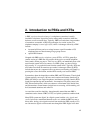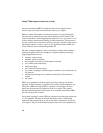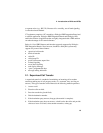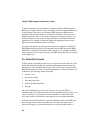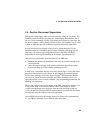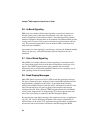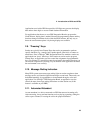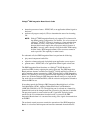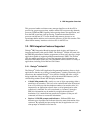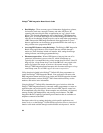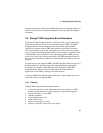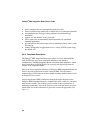2. Introduction to PBXs and KTSs
Applications used with a PBX that provides ANI digits may process the display
data and use those digits to access related database information.
For applications that choose to use a PBX Integration Board to program the
Nortel Norstar, display data is needed. Because the programming menus and key
functions change at different levels within the PBX software, the only way to
know the current menu options is by having display text available.
2.9. “Pressing” Keys
Station sets typically have Feature Keys that can be programmed to perform
specific functions (e.g., transfer, hold, speaker phone, speed dial, or connect to
trunk lines). Since a Dialogic
®
PBX Integration Board can emulate a station set,
applications can “press” these keys. If the station set can be used to program
Feature Keys, an application can also control the assignment of programmable
keys. For instance, if a specific key must be assigned to the transfer function, you
can include a sequence of “pressing” keys at the start of the application such that
the environment is set correctly.
2.10. Message Waiting Indication
Many PBX systems turn on message waiting lights on station set phones when
messages arrive, and clear the light after messages are retrieved. These tasks can
be handled manually, by an attendant, or be automated through a voice mail
application. Via a Dialogic
®
PBX Integration Board, an application can also
control the state of message waiting indications on other station sets (if this
feature is available on your PBX).
2.11. Automated Attendant
An auto attendant is a device connected to a PBX that answers incoming calls.
After answering, it may perform functions such as playing a greeting, asking the
caller to press a button, or routing the call to the proper destination.
25



